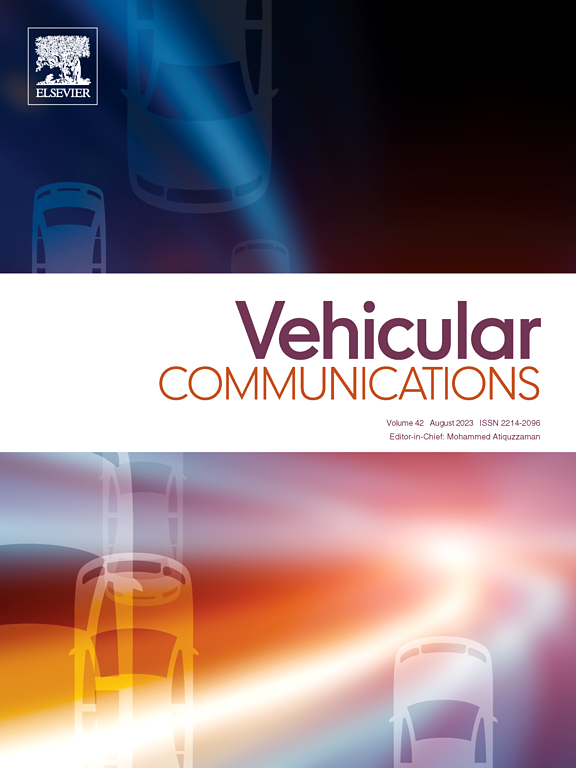Quantum-resilient blockchain-enabled secure communication framework for connected autonomous vehicles using post-quantum cryptography
IF 6.5
2区 计算机科学
Q1 TELECOMMUNICATIONS
引用次数: 0
Abstract
Connected and Autonomous Vehicles (CAVs) are pivotal to the evolution of Intelligent Transportation Systems (ITS), offering enhanced connectivity and automation. However, the emergence of quantum computing poses significant security challenges to existing cryptographic protocols. This study addresses these challenges by proposing a hybrid security approach that combines Kyber Post-Quantum Cryptography (PQC) with an Adaptive Grouping Score-based Practical Byzantine Fault Tolerance (AGS-PBFT) blockchain mechanism. The key contribution of this study is the integration of lattice-based Kyber PQC, which is resistant to quantum attacks, with a dynamically adaptive AGS-PBFT blockchain. This integration aims to secure vehicular communications by ensuring data integrity, authenticity, and confidentiality while enhancing the scalability and efficiency of consensus processes in dynamic CAVs environments.
The proposed hybrid approach has been validated through extensive simulations using the OMNET++ and SUMO simulators. The simulation results demonstrate that our approach outperforms existing methods, achieving lower latency, reduced computation costs, higher throughput, and enhanced security levels. Overall, the findings and methodologies presented in the paper can serve as a valuable reference for researchers and practitioners aiming to enhance the security and efficiency of CAVs in the era of quantum computing.
量子弹性区块链支持的安全通信框架,用于使用后量子加密技术连接的自动驾驶汽车
联网和自动驾驶汽车(cav)是智能交通系统(ITS)发展的关键,它提供了增强的连接性和自动化。然而,量子计算的出现对现有的加密协议提出了重大的安全挑战。本研究通过提出一种混合安全方法来解决这些挑战,该方法将Kyber后量子加密(PQC)与基于自适应分组分数的实用拜占庭容错(AGS-PBFT)区块链机制相结合。本研究的关键贡献是将基于晶格的Kyber PQC与动态自适应AGS-PBFT区块链集成在一起,Kyber PQC可以抵抗量子攻击。这种集成旨在通过确保数据完整性、真实性和保密性来保护车辆通信,同时增强动态自动驾驶汽车环境中共识过程的可扩展性和效率。
本文章由计算机程序翻译,如有差异,请以英文原文为准。
求助全文
约1分钟内获得全文
求助全文
来源期刊

Vehicular Communications
Engineering-Electrical and Electronic Engineering
CiteScore
12.70
自引率
10.40%
发文量
88
审稿时长
62 days
期刊介绍:
Vehicular communications is a growing area of communications between vehicles and including roadside communication infrastructure. Advances in wireless communications are making possible sharing of information through real time communications between vehicles and infrastructure. This has led to applications to increase safety of vehicles and communication between passengers and the Internet. Standardization efforts on vehicular communication are also underway to make vehicular transportation safer, greener and easier.
The aim of the journal is to publish high quality peer–reviewed papers in the area of vehicular communications. The scope encompasses all types of communications involving vehicles, including vehicle–to–vehicle and vehicle–to–infrastructure. The scope includes (but not limited to) the following topics related to vehicular communications:
Vehicle to vehicle and vehicle to infrastructure communications
Channel modelling, modulating and coding
Congestion Control and scalability issues
Protocol design, testing and verification
Routing in vehicular networks
Security issues and countermeasures
Deployment and field testing
Reducing energy consumption and enhancing safety of vehicles
Wireless in–car networks
Data collection and dissemination methods
Mobility and handover issues
Safety and driver assistance applications
UAV
Underwater communications
Autonomous cooperative driving
Social networks
Internet of vehicles
Standardization of protocols.
 求助内容:
求助内容: 应助结果提醒方式:
应助结果提醒方式:


